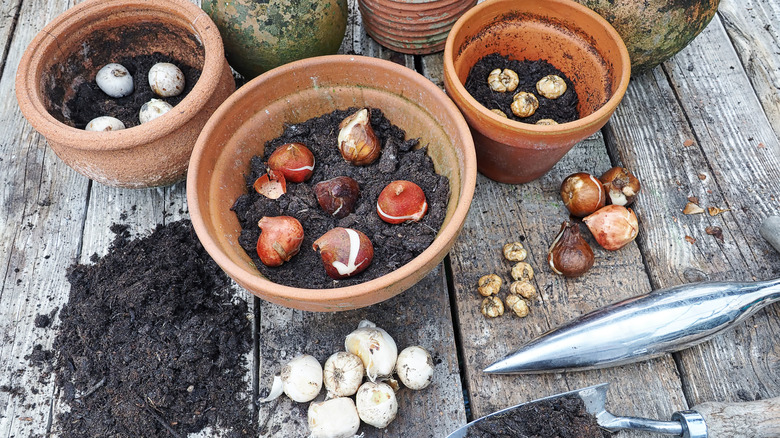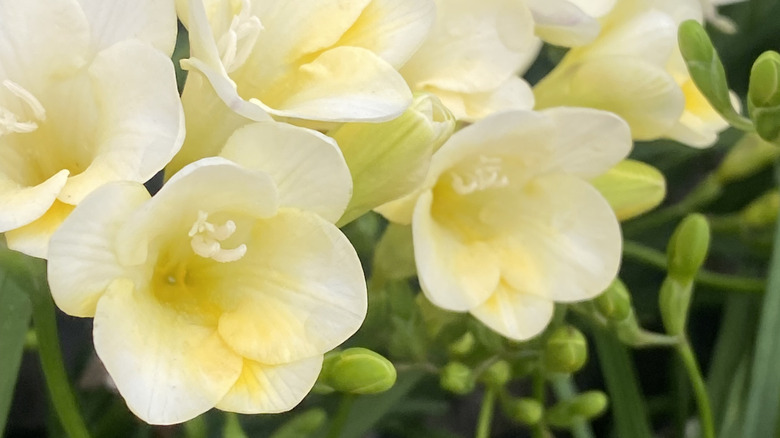The Beautiful Cut Flower Bulb You Plant In March For Summer Blooms
Around the time your autumn-planted bulbs like daffodils and crocuses begin to bloom is the perfect time to start thinking about planting out your summer blooming bulbs. These bulbs are planted in gardens in spring in most regions. Whether you enjoy creating your own cut flower bouquets or just like seeing and smelling gorgeous blooms in the garden, one perfect bulb (technically a corm) to plant during this time is the beautiful freesia.
With a vase life of two or more weeks and a range of beautiful colors, from creams and soft pastels to bold reds and pinks, it's no wonder freesias are such desirable flowers. You could even use them to grow your own wedding flowers, as freesias are an elegant and classic choice for bridal bouquets. While you can always grow freesia indoors during winter, spring is usually the ideal time to plant these flowers if you want to enjoy them outside in your summer cutting garden.
Caring for freesias in the garden
Freesias, like many spring-planted bulbs, corms, and tubers, is a tender perennial and can't survive winters in USDA zones lower than 9. Fortunately, freesia corms store well, so if you garden in a colder region, you can dig them up at the end of summer and store them until the following spring, just as you would with gladioli or dahlias. Then, once all threat of frost has passed, your freesias are ready to be planted back outside to bloom in summer.
While you can plant your freesias in a bit of shade, they tend to grow and flower best in full sun. They also need well-draining soil and consistent moisture. Be sure to provide them some stakes or other supports to prevent your freesia flowers from flopping over. Freesias generally flower about three months after planting, and you may want to plant multiple successions of corms a few weeks apart so you can use and admire the beautiful, fragrant blooms even longer. Freesias enjoy cool temperatures, with nights around 50 degrees Fahrenheit, so don't be surprised if they begin to fizzle out for the year once the summer heat fully kicks in. At that point you can stop watering and let them die back to the corm. Then they'll be ready to dig up and store until the next spring.

